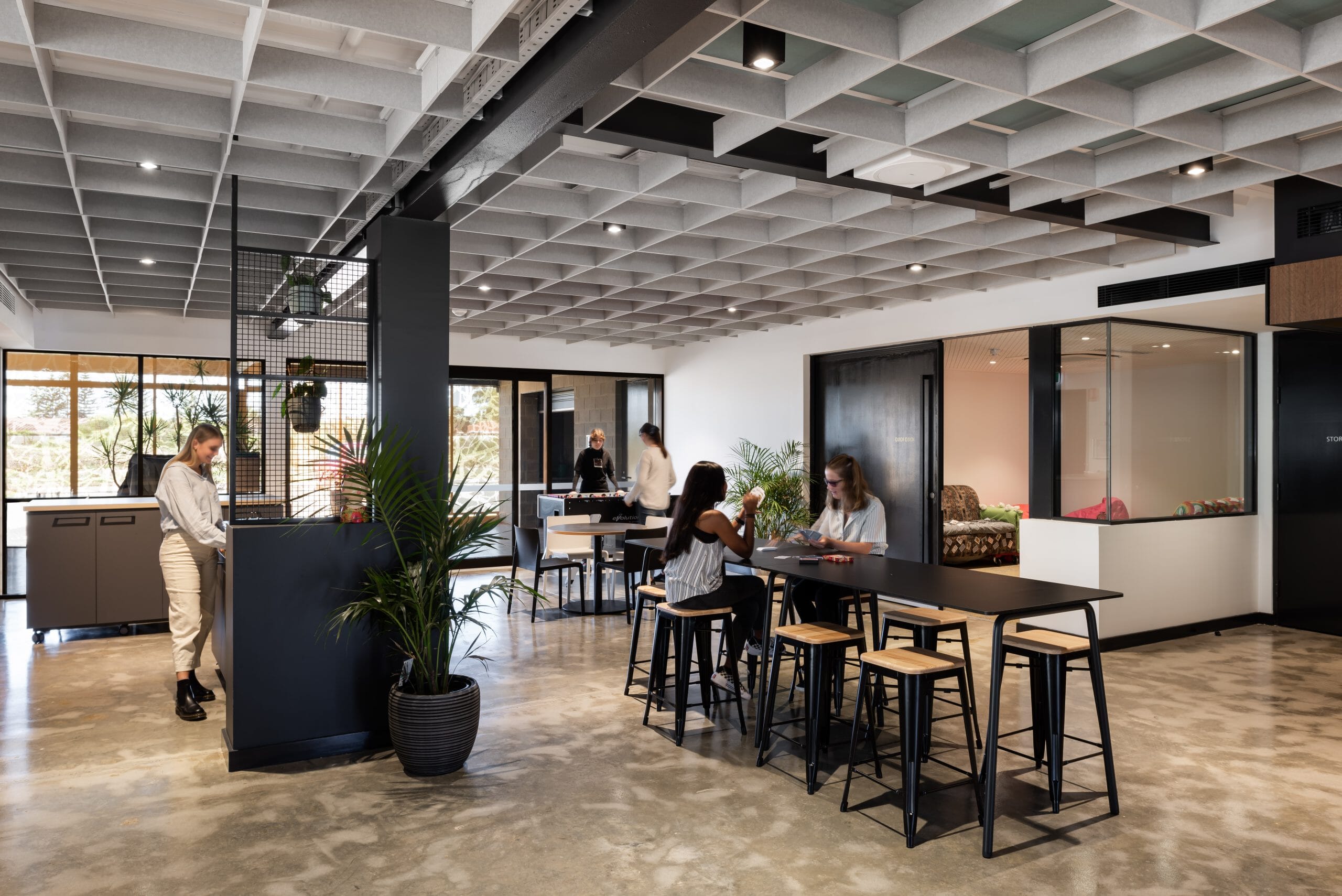
5 Minute Read
Open Plan Office Acoustic Standards 2025
A practical guide to BS ISO 22955:2021 and the acoustic treatments your workspace needs
Categories
Guide
TL;DR – Summary
Open plan offices boost collaboration but often suffer from excessive noise that harms focus, wellbeing and productivity.
The BS ISO 22955:2021 standard provides clear guidance for creating acoustically comfortable open workspaces;
- The key requirement is Class A ceiling treatment covering 50–60% of the space, as ceilings are the main source of reverberation control.
- Wall panels offer targeted support, and flooring provides only minor acoustic benefits.
- Other treatments, such as acoustic furniture, screens, and sound masking, can enhance performance but do not replace proper ceiling absorption.
Understanding Open Plan Office Acoustic Standards
Open plan offices remain the preferred layout for modern businesses, helping teams collaborate more effectively and shaping a more connected workplace culture. But with 20+ people often working in the same open space, noise quickly becomes a challenge and poor acoustics can negatively impact concentration, wellbeing and productivity.
The updated British Standard BS ISO 22955:2021 provides a clear framework for designing acoustically comfortable open plan offices. This article breaks down what the standard means in practice and outlines the recommended acoustic treatments Resonics provides to help offices meet acoustic expectations.
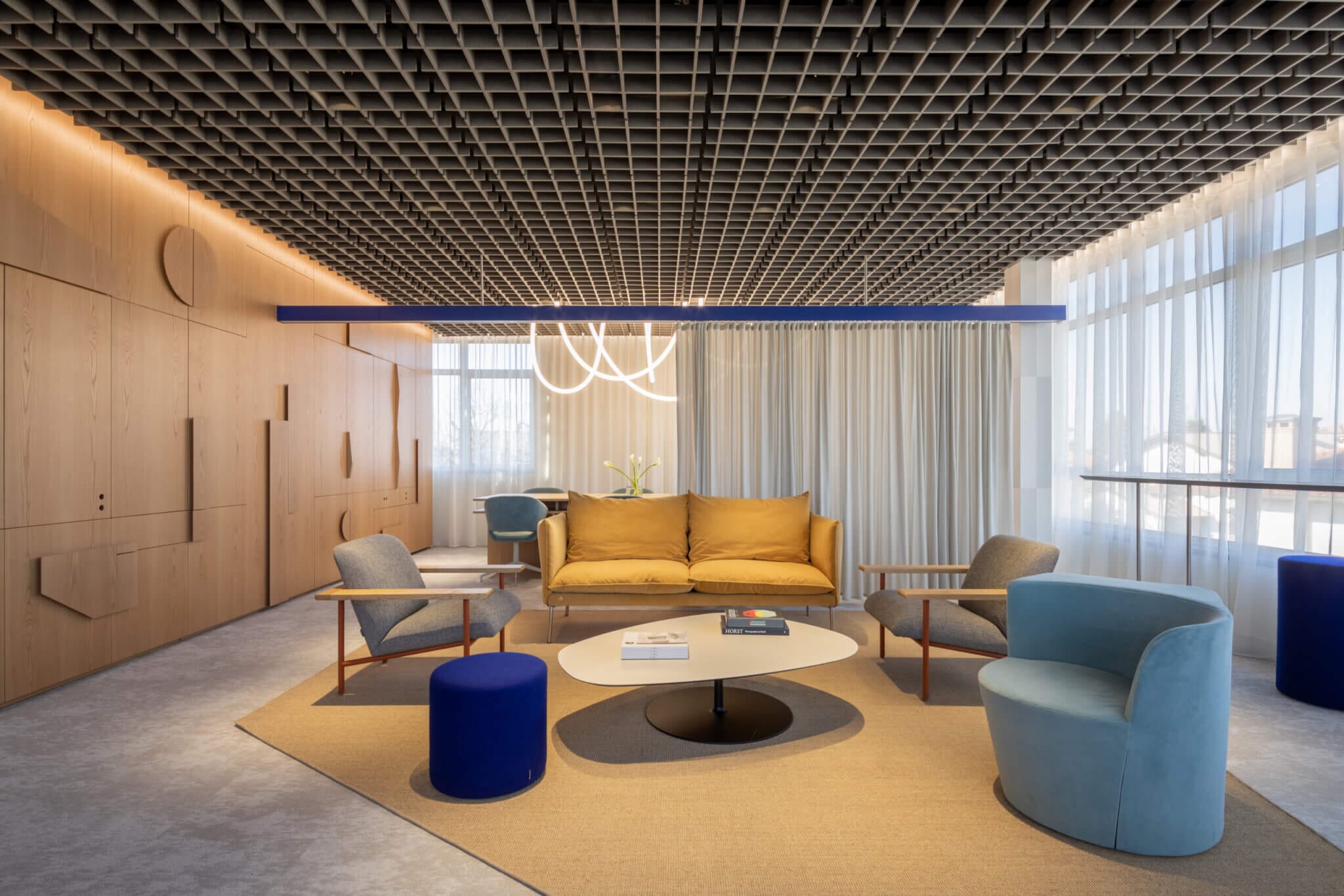

The Effects of Noise in Open Plan Offices
In open, shared environments, the most disruptive sounds are those that are:
- Uncontrollable
- Intelligible (speech)
- Irrelevant to the listener’s current task
With multiple conversations, phone calls, movement and office equipment all generating noise at different frequencies, open plan spaces can quickly become overwhelming. This leads to stress, fatigue, reduced focus and overall lower productivity.
Effective acoustic design directly reduces these distractions, helping staff stay productive and comfortable.
What BS ISO 22955:2021 Means for Open Plan Spaces
The standard aims to:
- Reduce disturbances between desks and teams
- Improve speech clarity in close-range conversations
- Maintain suitable noise levels based on tasks performed
The standard outlines six core workspace types, but most principles apply universally across open plan environments. Below, we outline the recommended acoustic treatments that align with these standards.
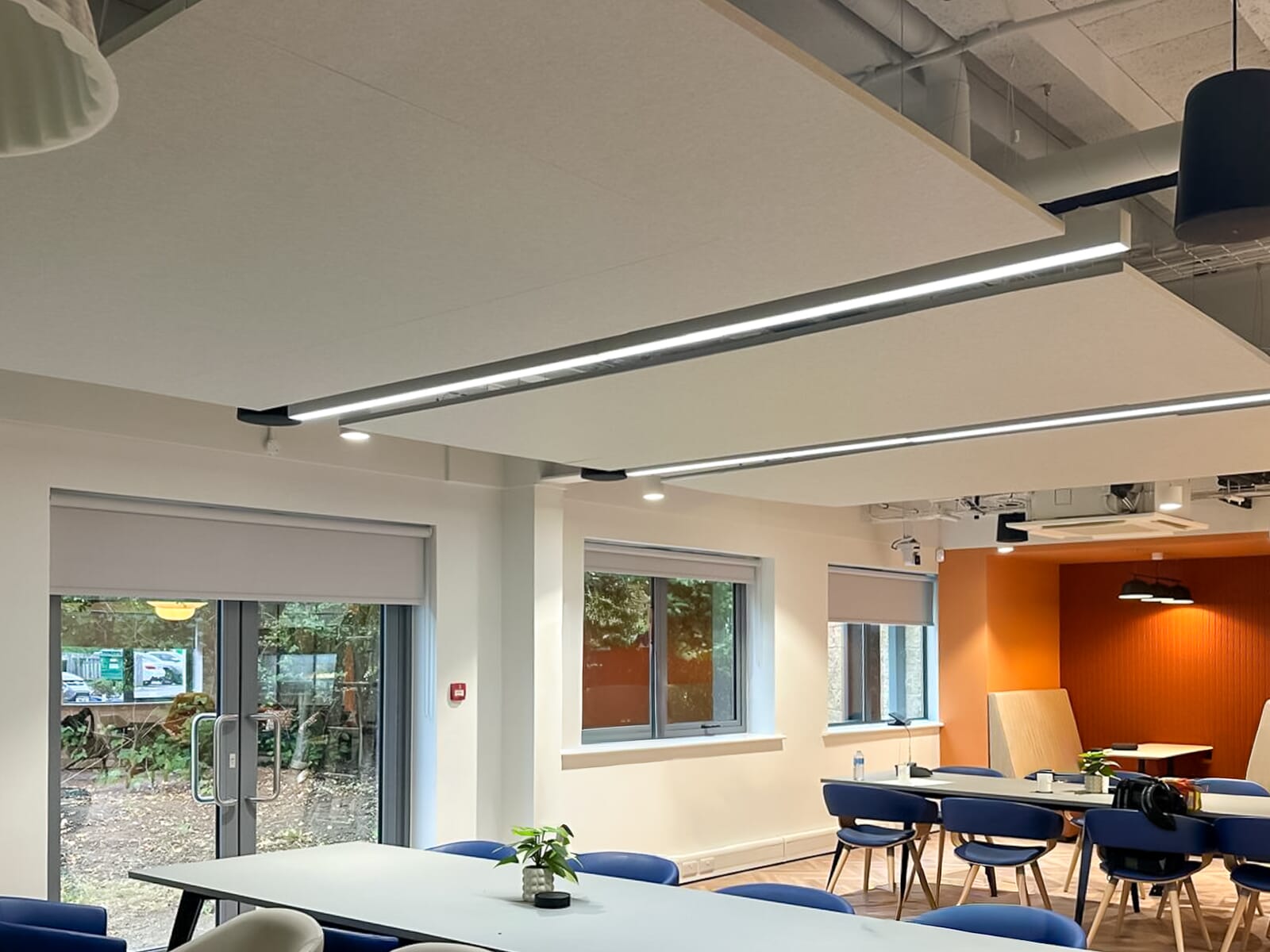
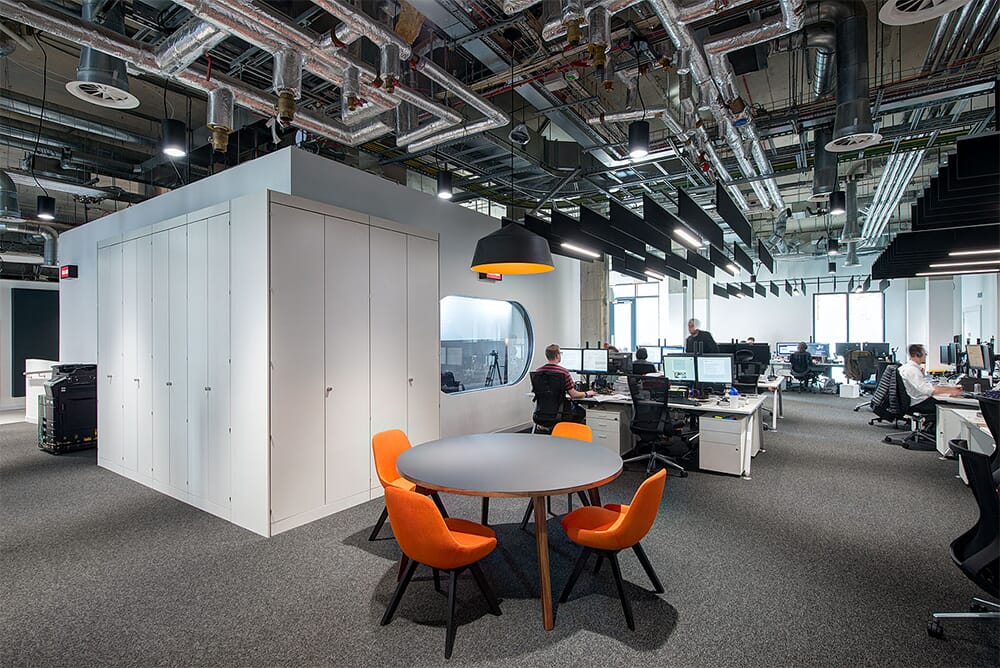
Guidelines for Open Plan Office Acoustics
Ceiling Treatment — The Most Critical Surface
Ceilings are typically the largest uninterrupted surface in an office, making them the most powerful contributor to echo, reverberation, and overall noise build-up.
According to BS ISO 22955:2021:
- The ceiling should have 50–60% acoustic coverage
- Materials should have an absorption coefficient close to 1.0 (Class A)
Recommended Class A ceiling absorbers:
- Ecophon Solo
- SilentSpace Rafts
- Autex Horizon
- Acoustic baffles (in appropriate applications)
These solutions prevent sound from reflecting downward into the workspace, significantly reducing noise levels.
Wall Treatment — Targeted Support Where Needed
Walls in open plan offices typically have less exposed area than ceilings, but strategic treatment remains valuable, particularly near workstations or in corner zones where flutter echo occurs.
Guidance:
- Install wall panels at a height of at least 1.2m
- Prioritise corners and workstation-adjacent surfaces
- Use acoustic panels or stretched fabric systems for effective absorption
While important, wall treatments cannot replace ceiling treatments. They should be used to support, not substitute, ceiling-based solutions.
Floor Treatment — Limited Acoustic Impact
Carpet or flooring with acoustic underlays offers only modest benefits at mid to high frequencies. Floor finishes are useful for:
- Reducing footfall noise
- Minimising impact sound
- Adding small amounts of absorption
Flooring alone will not address reverberation or noise transfer issues. Ceiling and wall treatments remain the best solutions.
Additional Considerations for Open Plan Office Acoustics
Acoustic Furniture
We have seen an influx of ‘Acoustic Furniture’ hitting the market in recent years. In general, furniture products offer minimal measurable absorption. However, when paired with a properly treated ceiling, certified acoustic furniture can:
- Reduce reverberation
- Create semi-private zones
- Support visual and acoustic separation
In some cases, it can replace minor wall treatments, but not ceiling treatments.
Acoustic Screens & Desk Screens
Screens help interrupt the direct path of speech between desks. The key is height, they must be higher than mouth height to be effective. Screens can provide:
- Localised speech reduction
- Visual privacy
- Sound attenuation between close workstations
But like furniture, screens alone cannot reduce overall noise without appropriate ceiling absorption.
Sound masking introduces a controlled, unobtrusive background noise to reduce speech intelligibility across a space. However, when misapplied (using HVAC hum, for example), it can make the environment more distracting.
High-quality systems such as Soft dB adapt to real-time ambient noise and operate within the correct frequency range.
Sound masking should be considered as part of a wider design strategy, not as a standalone fix.
Our surveying team will be able to recommend the right systems for your office.
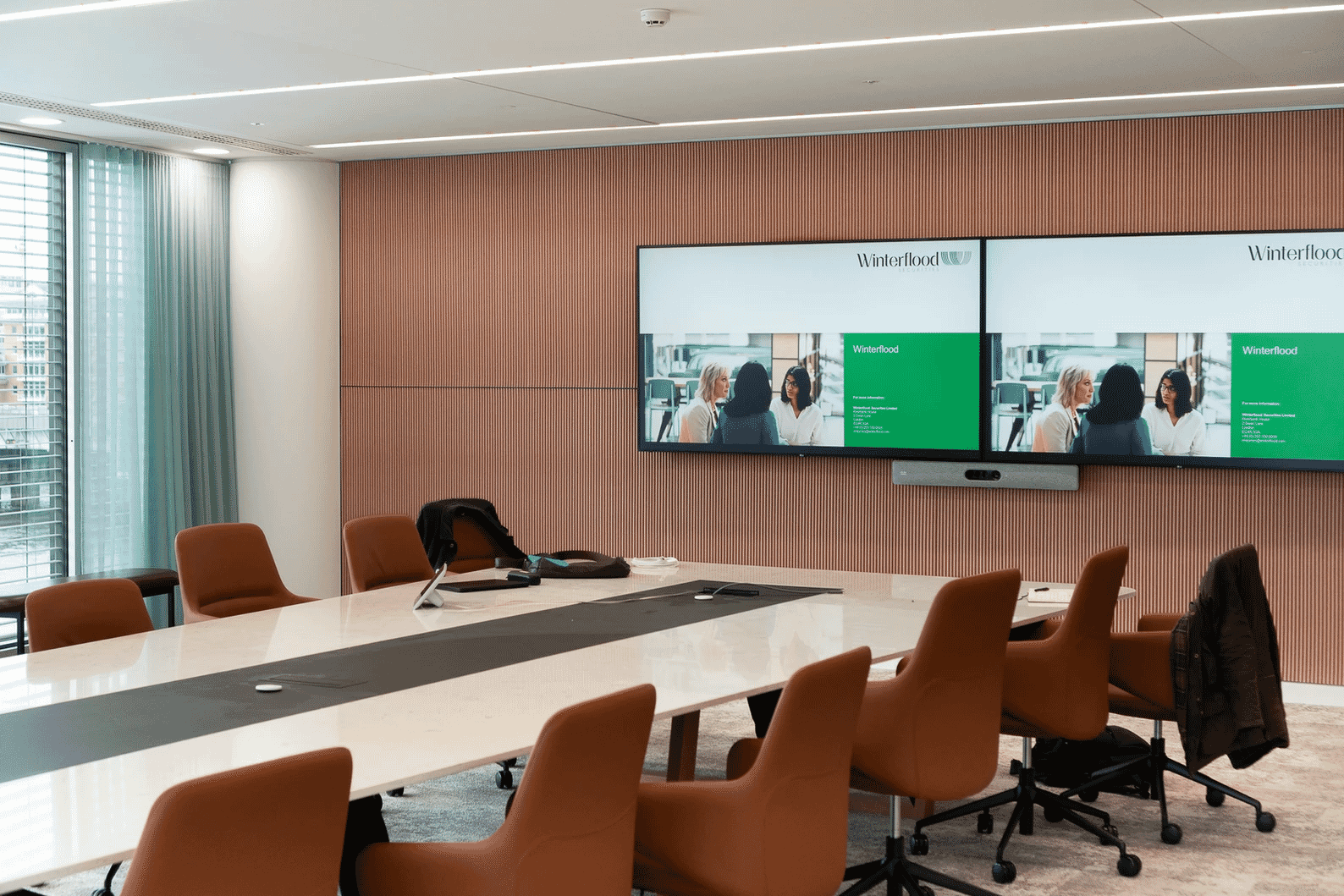

Conclusion
The BS ISO 22955:2021 standard provides clear, practical guidance for creating productive, comfortable open plan offices. At Resonics, we’ve helped thousands of workplaces achieve compliant, high-performance acoustic environments through expert acoustic design and installation.
Whether you’re refurbishing a workspace or designing a new office layout, our team can ensure your environment supports staff wellbeing, communication and productivity, while meeting the expectations of modern acoustic standards.
👉 Ready to improve your office?
Contact Resonics today for a tailored assessment and discover how better acoustics can transform your workplace.